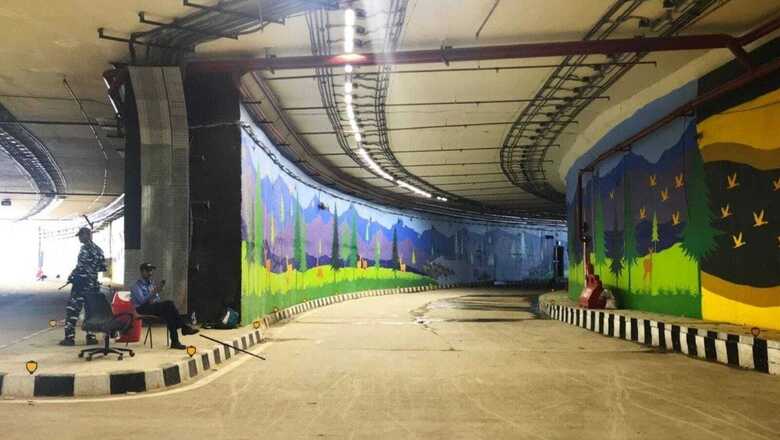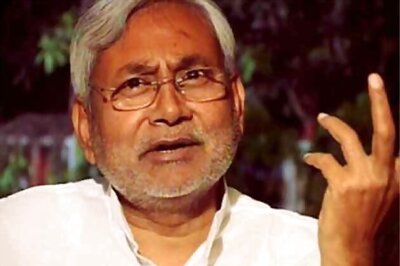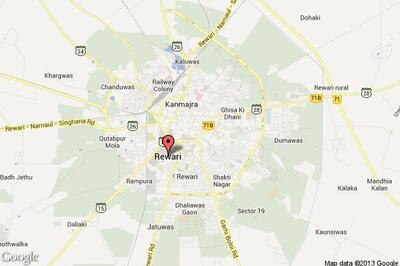
views
Delhi has long been a victim to its traffic woes. That’s why the inauguration of the main tunnel and five underpasses of the Pragati Maidan Integrated Transit Corridor project, by Prime Minister Narendra Modi, came as good news for Delhiites.
An integral part of the Pragati Maidan redevelopment exercise, the Pragati Maidan Integrated Transit Corridor project has been built at a cost of more than Rs 920 crore and is entirely funded by the central government. It is aimed at providing hassle-free and smooth access to the new world-class exhibition and convention centre being developed at Pragati Maidan to facilitate easy participation of exhibitors and visitors in the programmes being held there.
But it is also being hailed as a big step in a solution to the national capital’s traffic problems. But how will the tunnel actually benefit residents? News18 explains in ten easy points:
- The main tunnel connects Ring Road to India Gate via Purana Qila Road and Pragati Maidan. The Pragati Maidan tunnel will provide e-signal-free access to India Gate, the Supreme Court, and Mathura Road for motorists travelling from Noida, Ghaziabad, and east Delhi.
- This long-awaited tunnel will serve as an alternative route to Bhairon Marg, which is far exceeding its carriage capacity, and is expected to carry more than half of Bhairon Marg’s traffic load. Along with the tunnel, there will be six underpasses: four on Mathura Road, one on Bhairon Marg, and one at the Ring Road/Bhairon Marg intersection. The project is also expected to alleviate traffic congestion for over 100,000 commuters who use these roads.
- The growing development in neighbouring cities such as Ghaziabad, Noida, and the NCR region increased vehicular traffic on Ring Road, Mathura Road, and Bhairon Marg. The Delhi-Mathura Expressway added to the traffic congestion. “Opening of the tunnel and underpasses will streamline traffic bottlenecks at ITO and its surrounding areas. The project will save time and money for commuters and also reduce pollution,” a resident of Noida had told PTI.
- According to experts, the corridor will reduce traffic on these roads for at least ten years. This would result in more productive time, fewer vehicle emissions, and lower fuel costs, said a report by India Today. According to government estimates, nearly 1.89 lakh passenger cars (PCU) passed through the Bhairon Marg — Ring Road. The morning peak was estimated to be greater than 13,500 PCUs, while the evening peak was estimated to be greater than 19,000 PCUs. “Normally, any such project decongests the traffic for fifteen to twenty years. But if the traffic growth is high, within ten years it reaches its peak,” K Ravinder, principal scientist at the CSIR- CRRI, told India Today.
- According to an IIT Madras study, traffic congestion on Delhi roads costs around Rs 65,000 crore per year. This annual loss was calculated by accounting for fuel waste due to traffic congestion, productivity loss, air pollution, and road accidents. As the vehicular population in the Delhi-NCR continues to grow at a rapid pace, the study predicted that traffic congestion would worsen and losses would total around Rs 98,000 crore by 2030 if action to address the crisis is not taken soon.
- K Ravinder told India Today that if only fuel costs and time saved due to decongestion are considered, the numbers show significant positive outcomes for the project. Each vehicle, he claims, will save nearly 30 minutes of travel time. And traffic on that stretch averages 2 lakh to 2.5 lakh vehicles per day.
- In terms of emissions, a Times of India report stated that at least 12,900 tonnes of emissions will be reduced annually.
- The six-lane divided tunnel serves several functions, including access to Pragati Maidan’s massive basement parking. According to the report, the underground parking will be able to accommodate 4,800 cars and will be spread across 48 acres of land. “A unique component of the tunnel is that two cross tunnels below the main tunnel road have been constructed in order to facilitate movement of traffic from either side of the parking lot. It is equipped with the latest global standard facilities for smooth movement of traffic, such as smart fire management, modern ventilation, and automated drainage, digitally controlled CCTV and public announcement systems inside the tunnel,” the government said in a statement.
- LC Goyal, chairman and managing director of ITPO India Trade Promotion Organization told Mint that the main tunnel and five underpasses will open on Sunday, while the underpass at the intersection of Bhairon Marg and Ring Road will open in 4-6 weeks. After the underpass at the Bhairon Marg-Ring Road junction is completed, it will allow for signal-free movement between the two inter-state bus terminuses (ISBTs) at Sarai Kale Khan and Kashmere Gate, according to a project official.
- The 1.5-kilometer-long tunnel features artwork depicting the six seasons. The PM praised the artwork and suggested that the tunnel be made pedestrian-only on Sundays so that people could see the artwork on the walls.
Read all the Latest News , Breaking News , watch Top Videos and Live TV here.


















Comments
0 comment